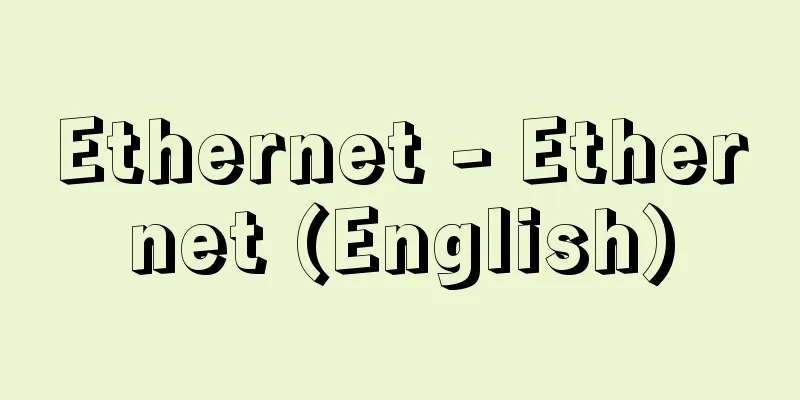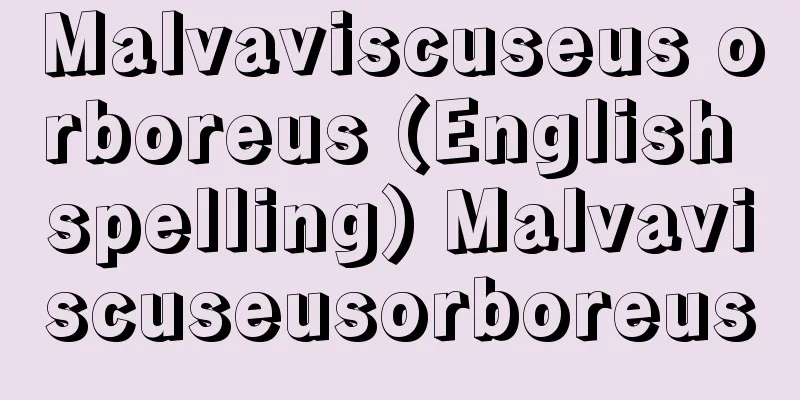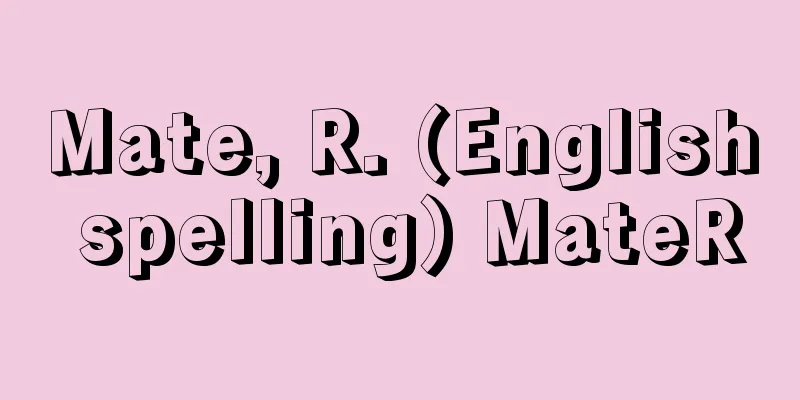Ethernet - Ethernet (English)

|
This is a local network (local area network, LAN) developed at the Palo Alto Research Center (PARC) of Xerox Corporation in the early 1970s, or the method used by this Ethernet. It uses a method called CSMA/CD (Carrier Sense Multiple Access/Collision Detection). Basically, many computers are connected to one cable (bus method). A computer that wants to send information waits for a time when no data is flowing on the cable and sends data on the cable. If another computer also sends data at the same time, a collision occurs and the data becomes mixed, so the error is detected and the transmission is stopped immediately. If there is no interference, the data is transmitted to all computers connected to the cable (just like radio waves traveling through the ether), but on the receiving side, each computer determines whether the data is intended for it or not. If a collision occurs, it waits a certain amount of time before trying to resend. This method avoids data collisions caused by multiple transmission requests. In this way, a bus-type local network can be formed. Several other local network methods, such as token ring and token bus, have been proposed and put to practical use, but today most use the Ethernet method. The Internet is a method for interconnecting these local networks. Initially, the communication capacity of Ethernet was 10 megabits per second, but today there are many that use optical communication and have a capacity of several gigabits per second, and even 10 gigabits per second networks are now available. [Tamura Koichi] [Reference] | |Source: Shogakukan Encyclopedia Nipponica About Encyclopedia Nipponica Information | Legend |
|
1970年代前半にアメリカのゼロックス社のパロアルト研究所Palo Alto Research Center(略称PARC)で開発されたローカルネットワーク(構内情報網、LAN)、またはこのイーサネットが用いる方式をいう。CSMA/CD(Carrier Sense Multiple Access/Collision Detection)とよばれる方式を用いる。基本的に1本のケーブルに多数のコンピュータが接続される(バス方式)。情報を送り出したいコンピュータは、ケーブル上にデータが流れていないときを見計らって、データをケーブル上に流す。他のコンピュータがやはり同時にデータを流したときは、衝突が起きデータが混信するので、エラーを検出し、ただちに止める。混信がなければこのデータはケーブルに接続されたすべてのコンピュータに伝わる(あたかもエーテルetherの中を電波が伝わるように)が、受信側では自分あてのものかどうかの判定はそれぞれのコンピュータが行う。衝突が生じたときにはある適当な時間を待ってから再送を試みる。この方法によって複数の送信要求によるデータの衝突を回避する。こうしてバス型のローカルネットワークを形成することができる。ローカルネットワークの方式には、このほかトークンリングやトークンバスなど何種類かが提案され実用化されたが、現在ではほとんどがイーサネット方式をとっている。これらのローカルネットワークを相互接続する方式がインターネットである。初期のイーサネットの通信容量は10メガビット/秒であったが、現在では光通信を利用した数ギガビット/秒のものも少なくなく、10ギガビット/秒のものも出現している。 [田村浩一郎] [参照項目] | |出典 小学館 日本大百科全書(ニッポニカ)日本大百科全書(ニッポニカ)について 情報 | 凡例 |
Recommend
Aeonium genus
...The Japanese species Orostachys iwarenge (Maki...
Trachurus japonicus (English spelling)
…Many species of horse mackerel are dried. Horse ...
Neapolis (Greece) (English spelling)
...It is the port of shipment for Macedonian toba...
China Trans-China Expressway
This expressway runs east-west from the Hanshin r...
Golden Monkey - Golden snub-nosed monkey
Scientific name: Rhinopithecus roxellanae Animals....
Skin beetle
...It was named after the damage it causes by fee...
fall line
…A topography in which numerous waterfalls, rapid...
fanā (English spelling) fana
...Eventually, the distinction between the object...
aediles
...The powerful plebeians wanted equal rights wit...
Ejector Condenser - Ejector Condenser
...Among the former, Figure 1 shows a barometric ...
Vázquez, Tabaré
Born January 17, 1940, Montevideo. Uruguayan polit...
Alois Hába
Czech composer. He introduced the microtonal scal...
connecting rod
…It is also called a connecting rod or conrod. In...
Coffea arabica (English spelling)
...The character "coffee" is used. [Cof...
Characterology
...However, the term personality is rarely used i...






![Shihoro [town] - Shihoro](/upload/images/67cbc99a7dd0d.webp)


